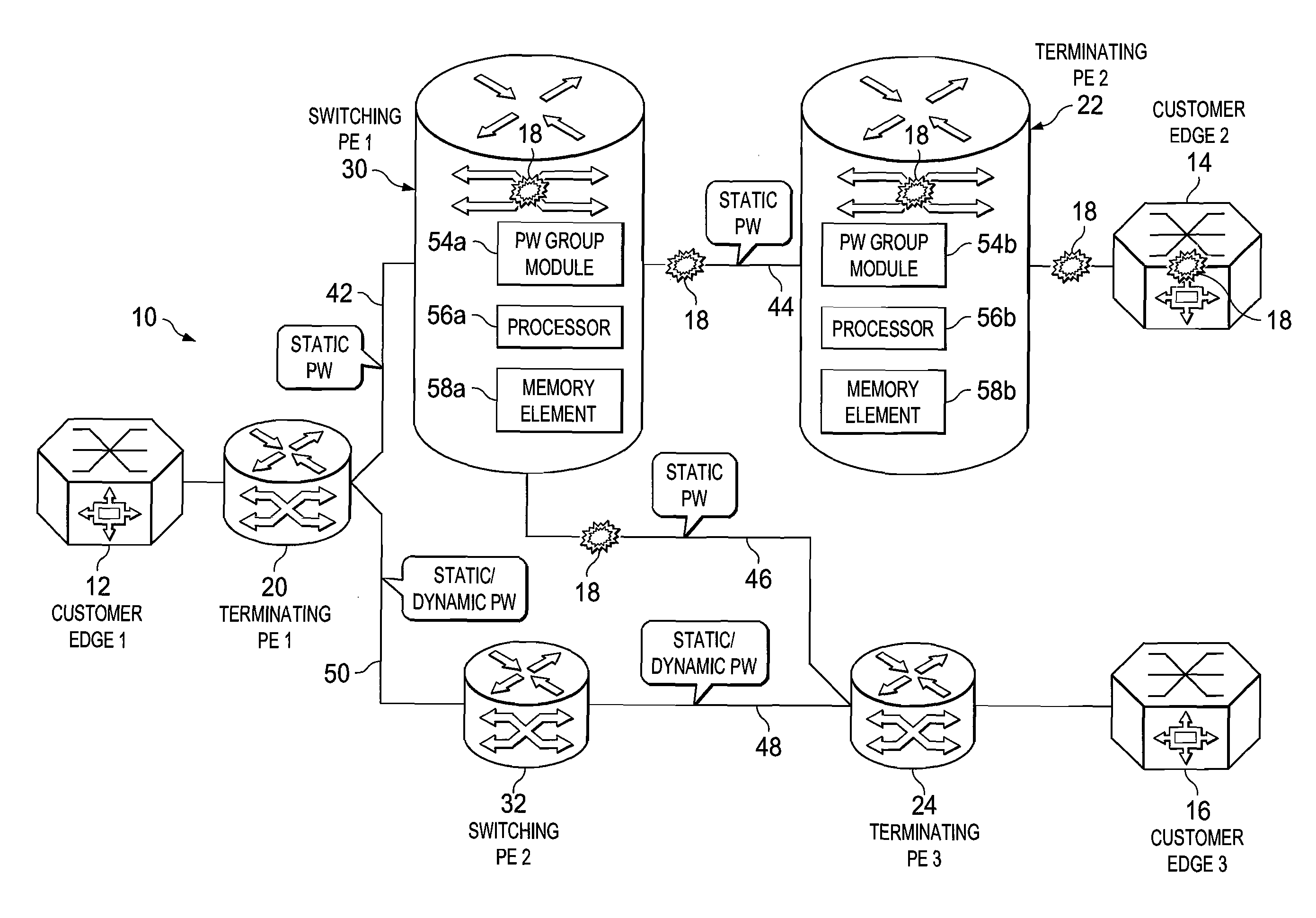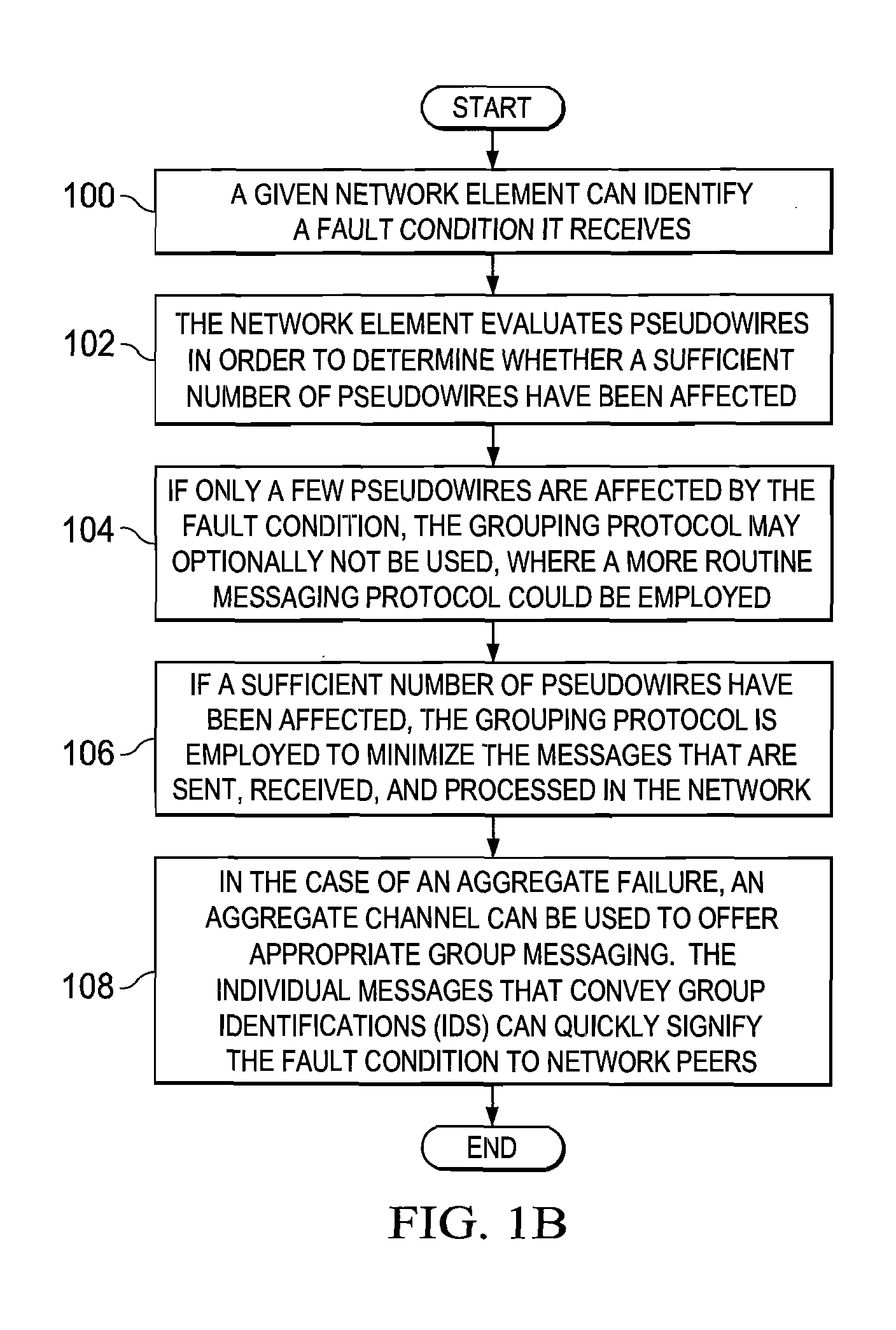System and method for providing pseudowire group labels in a network environment
a network environment and pseudowire technology, applied in the field of communication, can solve the problems of component manufacturers, system designers, network operators, and inability to quickly and effectively provision connections, and achieve the effect of reducing the number of components and reducing the number of network operators
- Summary
- Abstract
- Description
- Claims
- Application Information
AI Technical Summary
Problems solved by technology
Method used
Image
Examples
example embodiments
[0012]FIG. 1A is a simplified block diagram of a communication system 10 for providing pseudowire group labels in accordance with one example of the present disclosure. FIG. 1A includes a customer edge 1 (CE1) 12, a CE214, and a CE316, where a number of faults 18 are shown as propagating in the network. Typically, when an error or a failure occurs in the network (e.g., an interface failure, a pulled cable, a switch failure, hardware / software failures generally, etc.), messages are sent to various network devices in order to inform them of these fault conditions. Faults 18 of FIG. 1A are indicative of such messages, where the underlying fault condition (being signaled by the messages) can occur virtually anywhere in a network (e.g., in a customer edge, in provider equipment, etc.). FIG. 1A also includes a terminating provider equipment 1 (TPE1) 20, a TPE222, a TPE324, a switching provider edge 1 (SPE1) 30, and a SPE232. In one particular example implementation, the TPEs and SPEs of F...
PUM
 Login to View More
Login to View More Abstract
Description
Claims
Application Information
 Login to View More
Login to View More - R&D
- Intellectual Property
- Life Sciences
- Materials
- Tech Scout
- Unparalleled Data Quality
- Higher Quality Content
- 60% Fewer Hallucinations
Browse by: Latest US Patents, China's latest patents, Technical Efficacy Thesaurus, Application Domain, Technology Topic, Popular Technical Reports.
© 2025 PatSnap. All rights reserved.Legal|Privacy policy|Modern Slavery Act Transparency Statement|Sitemap|About US| Contact US: help@patsnap.com



